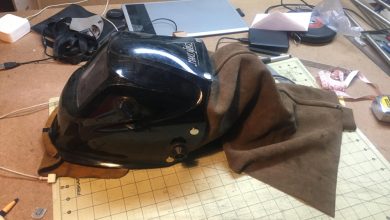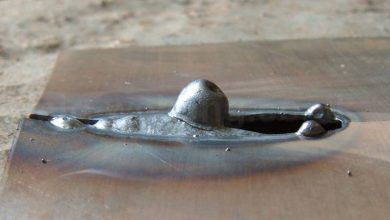What Is the Best Wire for Mig Welding
The best wire for MIG welding depends on several factors, including the desired properties of the weld, welding process parameters, shielding gas mixture requirements, and any additional cleaning or post-weld requirements.
Solid wires are widely used in the industry for their versatility and ease of use.
The AWS ER70S-6 solid wire is commonly used for MIG welding mild steel and offers smooth wire feeding and smooth weld beads.
The AWS ER70S-3 solid wire is used when a clean finished weld is important, while the ER80S-D2 low-alloy solid wire is recommended for high-strength applications.
It is important to consult with distributors or filler metal manufacturers for assistance in selecting the right wire for the specific job.
Did You Know?
1. The first commercially successful MIG (Metal Inert Gas) welding process was developed in the 1940s, and it revolutionized industrial welding by allowing for faster and easier joining of metals.
2. Copper-coated mild steel wire is the most commonly used wire for MIG welding. The copper coating serves to protect the wire from rust and improve electrical conductivity.
3. Nickel-based wires, such as Inconel and Monel, are often used for MIG welding applications that require high temperature and corrosion resistance, such as in the aerospace and petrochemical industries.
4. Stainless steel wire is another popular choice for MIG welding, particularly when joining stainless steel parts. It offers excellent corrosion resistance and enhances the durability of the weld.
5. Titanium wire is occasionally used for specialized MIG welding applications where high strength and light weight are essential, such as in the automotive and aerospace industries. However, it requires precise welding parameters and careful handling due to its reactive nature.
Aws Er70S-6 Solid Wire
Among the various types of solid wires available for MIG welding, the AWS ER70S-6 solid wire stands out as one of the most commonly used options. It is widely utilized for welding mild steel in a range of applications such as general fabrication, automotive welding, and robotic welding.
One of the key advantages of AWS ER70S-6 solid wire is its smooth wire feeding, which ensures a hassle-free welding process. Additionally, it produces smooth and clean weld beads, resulting in aesthetically pleasing welds. This makes it suitable for applications that require a visually appealing finished product.
AWS ER70S-6 solid wire can be used with either 100 percent CO2 or an argon/CO2 blend as the shielding gas. It is important to note that when using this wire, silicon island deposits may form on the surface of the completed weld. These deposits should be removed before painting or applying any protective coating to ensure optimal adhesion and appearance.
Aws Er70S-3 Solid Wire
Another type of solid wire commonly used in the MIG welding industry is the AWS ER70S-3. This wire is specifically chosen for applications where a clean finished weld is of utmost importance. It offers efficient wire feeding and generates a clean weld deposit, reducing the need for extensive post-weld cleaning.
The AWS ER70S-3 solid wire finds frequent use in:
- Automotive and automated welding applications
- General fabrication
- Light sheet metal fabrication
The clean weld deposit it produces ensures minimal surface imperfections, leading to enhanced weld quality and efficiency.
Er80S-D2 Low-Alloy Solid Wire
For welding carbon and low-alloy steels that require higher tensile and yield strength, the ER80S-D2 low-alloy solid wire is recommended. This wire is particularly suitable for high-strength applications such as welding construction equipment, pipe, and trailers.
The ER80S-D2 solid wire contains manganese-moly alloy, which imparts increased strength to the welds. Its mechanical properties make it a reliable choice in projects that demand robust and durable welds. By using this wire, welders can ensure the longevity and structural integrity of their welding projects.
Factors To Consider When Choosing The Best Wire For Mig Welding
When selecting the best wire for MIG welding, several factors should be taken into consideration:
- The desired properties of the weld, such as strength, appearance, and the ability to withstand various environmental conditions, should guide the selection process.
- Welding process parameters, including wire feed speed and voltage, play a vital role in determining the appropriate wire type.
- Shielding gas mixture requirements must also be considered. For example, spray transfer mode, a common welding mode for solid wire, necessitates a minimum of 85 percent argon in the shielding gas mixture. Understanding the specific requirements of the welding process will help in choosing the best wire for the job.
- Lastly, any additional cleaning or post-weld requirements should be taken into account. Some solid wires may produce deposits or imperfections on the surface of the weld that require extra cleaning or preparation before subsequent treatments or coatings can be applied.
Consult With Distributors Or Filler Metal Manufacturers
Considering the wide range of options available when it comes to selecting the best wire for MIG welding, it is advisable to consult with distributors or filler metal manufacturers. These professionals have an in-depth understanding of different wire types and their applications and can offer valuable guidance in choosing the most suitable wire for specific welding projects.
By seeking expert advice, welders can save time, reduce the risk of selecting an inappropriate wire, and ultimately achieve high-quality and reliable welds. Distributors and filler metal manufacturers have access to a wealth of knowledge and experience that can help welders make informed decisions and optimize their welding processes.
In conclusion, the choice of the best wire for MIG welding depends on factors such as the type of material being welded, desired weld properties, and specific application requirements. Solid wires, such as AWS ER70S-6 and AWS ER70S-3, offer excellent performance in a range of applications. In cases where higher strength is required, the ER80S-D2 low-alloy solid wire provides a reliable solution. By considering these factors and seeking professional guidance, welders can make informed choices and achieve superior welding results.
Check this out:
https://www.youtube.com/watch?v=vFVdHDb0DKs
Frequently Asked Questions
Which is better 0.8 mm or 0.9 mm MIG wire?
The choice between 0.8 mm and 0.9 mm MIG wire depends on the specific welding needs. If you frequently work with thin materials of approximately 1.0mm, opting for 0.8 mm wire might be advantageous as it can provide better control and precision. Alternatively, if you have a smaller MIG welder with a limited capacity of around 130-150 Amps, the 0.8 mm wire would be a more suitable option since it matches the output range of your machine and ensures optimal performance. Ultimately, the decision should be based on your specific requirements and the capabilities of your welding equipment.
What is the best MIG wire to use without gas?
When it comes to MIG welding without gas, the best choice for wire would be a flux-cored wire filler metal, specifically FCAW-S. This type of wire is designed to produce high-quality welds without the need for an external gas source. Whether you are a beginner or an experienced welder, FCAW-S can meet your welding needs and provide excellent results in various conditions. Its self-shielding properties make it a reliable option for achieving strong and durable welds, even without the use of additional shielding gas.
What is the difference between ER70S 2 and ER70S 6?
While both ER70S 2 and ER70S 6 wires have similar specifications, the key distinction lies in the better yield and tensile strength offered by ER70S6. This superior performance is attributed to its higher silicon content, which enhances the fluidity of the filler metal. As a result, ER70S6 effectively carries oxide to the surface, resulting in improved weld quality, particularly on blocked surfaces. Thus, the key dissimilarity lies in the better performance and oxide removal capabilities of ER70S 6 when compared to ER70S 2.
What is the difference between ER70S 3 and ER70S 6?
ER70S-3 and ER70S-6 are both commonly used for Gas Metal Arc Welding (GMAW), but they have slight differences in their composition. ER70S-3 is preferred for well-cleaned weldments, where the surface is free from contaminants. It has minimal deoxidizers, making it suitable for clean welding applications. On the other hand, ER70S-6 contains more deoxidizers, making it more effective when there may be the presence of mill scale or other contaminants on the surface. It is designed to provide better penetration and stability in such conditions. Overall, the choice between ER70S-3 and ER70S-6 depends on the cleanliness of the weldment surface and the presence of mill scale or other contaminants.

